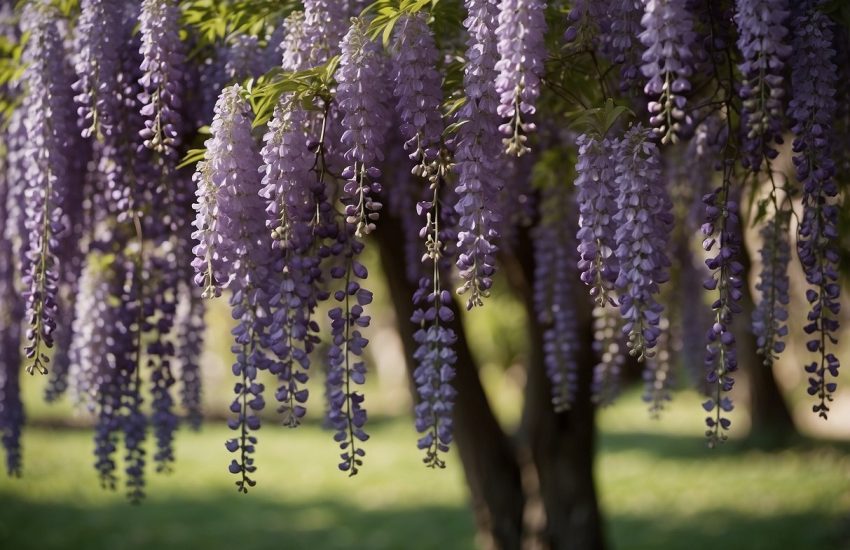Best Dogwood Trees to Plant in Colorado
You are probably wondering which type of dogwood best suits the climate in Colorado. This problem may arise because you may not be unsure if your chosen dogwood plant will do well in your weather. The good news is that Colorado is located in a very cool climate, which favors most of the varieties of dogwood plants. Some types that will thrive amazingly in Colorado are the pink princess, stiff dogwood, Cornelian cherry, Northern swamp dogwood, Kousa, and rough leaf dogwood.
While most varieties of dogwood can thrive well in the Colorado region, there are some things to look out for when choosing which dogwood to plant in your garden. You might want to choose between the hardy and the bushy varieties. The bushy types provide attractive foliage and stems. You can also select the dogwood variety based on the height of a mature tree. It would be best if you always went for a tree of considerable size, probably between 25 and 30 feet tall. Here are some of the best dogwood trees to grow in Colorado:
Kousa Dogwood
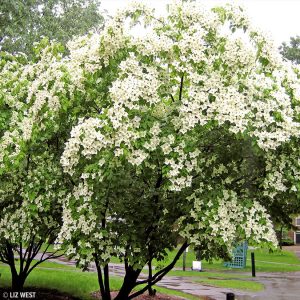
The Kousa is a small to medium-sized tree. This magnificent tree grows to a mature height of 30 feet. The primary use of this tree is as a specimen or in shrub borders. It is a hardy tree. During its life, the Kousa attains three different shapes. When young, it has an upright position with a conical shape. At its middle growth stage, the Kousa becomes vase-shaped. At maturity, this dogwood plant develops more horizontal, rounded, and widely spread branches.
These trees flower roughly in May, providing berries that look like raspberries. The peeling bark of the mature trunk barks an attractive look. The color of the fall leaves is purple to scarlet and lasts for approximately 3 to 4 weeks. This tree performs better in open places and greatly tolerates moderate shade. Also, it thrives well in well-drained acidic soils and does not prefer waterlogged soils. It is more resistant to diseases, drought problems, and the cold. This plant is also mildly invulnerable to damage by deer. Its shallow root makes it hard to transplant, but when it is in the early spring, it is easy to transplant this plant.
Stiff Dogwood
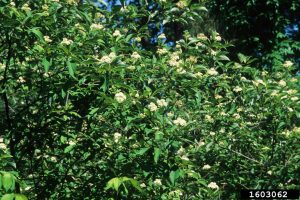
The stiff dogwood is another type of dogwood that can thrive well in Colorado. This plant is native to the East-Central and Southern United States. It naturally thrives in streams, rivers, ponds, and lakes. Previously known as Cornus foemina, a matured stiff dogwood may have a height range of 10 to 25 feet. In the spring, this small tree has attractive red twigs and clusters of showy white flowers. The fruits are blue to pale blue during the spring, and it is generally a rigid tree.
Unlike the Kousa, this variety of dogwood is tolerant of wet soil conditions. It prefers full sun and partial shade. The main propagation style of this type of plant is through seeds. This plant has multiple trunks. The upper surface of its leaves is dark green and smooth, while the lower surface is pale gray-green with sparse hairs. The flowers of this plant are creamy white and appear at the ends of the branches. They also appear in the spring, with the blue drupe fruits produced in the fall. Butterflies, wasps, bees, and flies are attracted to the nectar and pollen of this plant. This plant thrives well in wet areas near ponds and streams since it is tolerant of poorly drained soils. It works well for neutralizing soggy sites.
Cornelian Cherry Dogwood
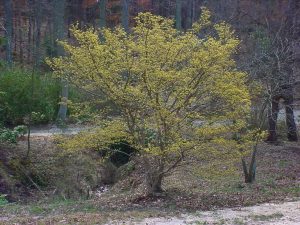
The Cornelian cherry is another variety of dogwood that can thrive in Colorado. It is a small, multi-stemmed deciduous shrub that might need to be trained while small. While growing, it is usually round or oval. It has green foliage of 2 to 4 inches long. Leaves of this variety of dogwood are arranged in the opposite direction, and the branches are set in the opposite direction as well. This shrubby plant produces yellow flowers which appear towards the end of the winter and bear red fruits which people can eat.
These fruits resemble olive fruits in size and shape. The fruits are used for making drinks, syrups, and jams. The fruits of the cornelian cherry can be eaten fresh or dried, though they require ripening to avoid the bitterness of the unripe fruits. The leaves of this dogwood may develop some reddish-purple in the fall. The four-season beauty comes from the peeling of the exfoliating brown bark. This plant is relatively slow in growth and may take up to 10 years to achieve a height of 15 feet.
Pink Princess Dogwood
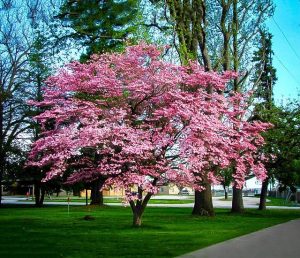
The Pink Princess is yet another dogwood variety you can choose to plant in your garden. It is a zone 4 variety of dogwood, with small to medium-sized trees, which can thrive well in smaller places. This tree is hardy and easy to grow. The growth rate of this tree is 2 to 3 feet per year. It prefers well-drained acidic soils that are moist. It may come in three colors which are pink, white, and red.
This tree is drought-resistant. The flowers from this tree attract many flowers to the garden. At a mature age, the tree will attain a height ranging from 20 to 30 feet. The trees are hardy, therefore eliminating the need for one to keep on taking care of them every other moment. It produces low-to-the-ground branches that spread horizontally. The fruits from this variety of dogwood will bring even more visitors to your garden. The bark of these plants maintains its color throughout the year, making it attractive and appealing.
Rough-leaved Dogwood
The rough-leaved dogwood is yet another variety of dogwood you could perhaps consider planting in your garden. This variety is a shrubby, small spreading tree. The branches of this plant grow irregularly. It is generally a spreading tree. The leaves of this plant smell faintly like sour milk. The upper surface of this plant is olive green in color and has rough-hairy above it. The lower surface is pale reddish with wooly, dense hairs. The tree bark is grey-brown with shallow groves and short, thin plates. As the twigs grow, they are green and hairy, but as the years go by, the twigs turn reddish-brown and smooth.
During flowering, it produces yellowish-white flowers. The fruits of the rough-leafed dogwood appear approximately from August to October. It produces white fruits which have 1 to 2 seeds inside. The fruits are globe-shaped and also very fleshy. The main feature of this variety is its rough upper surface. A mature plant can attain a height of 10 to 25 feet. It can be used as a buffer strip around parking lots, highways’ medians, and near decks and the partitions of homes. This plant can spread 10 to 15 feet long.
Northern Swamp Dogwood
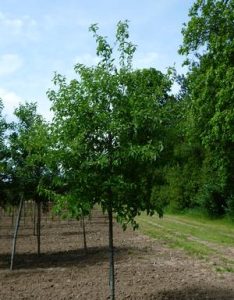
The Northern swamp dogwood is another variety that can thrive well in Colorado. This plant is native to Canada and the Northeastern United States. This is a shrubby plant that grows to a height of 5 m. It produces many suckers and stems, and the older plants’ barks are distinctively gray. These plants grow upright and are rounded in shape. The leaves of this plant are arranged oppositely. The flowers of this plant are terminally born. They are produced from May to early June.
The flowers have four small petals, forming clusters rounded to about 4 inches wide. The flowers of this plant turn into green fruits in the late summer. The white fruits are attached to the plants by their red-colored pedicles. The beauty of this plant is that its flowers attract many birds.
The older branches grow slower compared to the younger ones. However, each plant has a flower at the tip. It produces a reddish or purplish color in fall foliage, though not very conspicuous from a distance. It thrives well in slightly acidic, well-drained soils that are moist to wet. The plant also performs well in full sun to partial shade. It is resistant to most pests and diseases.
Planting And Caring For Dogwood Trees
Now that we have looked at some of the varieties of dogwood you can choose to plant in Colorado, I am pretty sure you already have in mind the array which you prefer by now. Assuming you’ve already selected the type you want, let’s go over the basics of planting and caring for dogwood trees.
In their natural environment, dogwoods grow surrounded by other plants. They try as much to avoid the full sun. This is an important fact to remember. Dogwoods generally perform well under partial shade, while some flowering varieties may still thrive very well under full sun.
There is a disclaimer about growing the trees in full sun since these trees will be susceptible to heat stress and dogwood borer. This is because, under the circumstances that one has to plant the dogwood under full sun, frequent watering is necessary. While these plants can grow in various climates and soils, dogwoods typically grow well in well-drained soils rich in humus and slightly acidic.
You can transplant dogwoods grown in containers at any time of the year, provided you ensure that the dogwood is watered regularly after transplanting. It would be best if you planted it at two-thirds the depth of its root ball when transplanting. The soil should be generally mounded around the sides of the root ball, but you should be careful not to place the soil on top of the root ball.
The root ball should be slightly above ground level. Mulch can be used to conserve water, but it should be kept at least 5 cm away from the trunk. It is advisable to thoroughly water the dogwood after transplanting until the tree becomes well established.
Regular watering is advisable during the summer and the fall. This is also advisable during the flowering stage since the tree requires the most water. Mulching greatly helps to conserve this water, especially during the hot season. It is advisable to use a slow-release fertilizer if a need for fertilizing the dogwood arises. However, a well-established dogwood might not require fertilizer.
You might need to prune the dogwood to keep it more beautiful and remove dead or injured branches, suckers, and diseased or injured parts. However, note that dogwoods are not particularly demanding plants. When pruning, you should always know that flowering dogwoods are called “bleeders” since they bleed as soon as possible. That makes them susceptible to diseases. Therefore, it would be best if you pruned flowering dogwoods during the summer since they will not bleed as soon as possible.
Dogwood is not a labor-intensive plant. That means you have a lot of time to do other essential things like handling other plants in your beautiful garden. It only requires care when transplanted and at a tender age. This is when you must ensure that the water quantity fed to the dogwood is correct and at the right time.
When the plant becomes established, the overall care needed to make the plant thrive is very minimal. What matters is for the tree to be planted in the proper location under the appropriate conditions. The landscape also determines a lot about the future plant’s stability.
Do you want a perfect ornamental tree that will spice up your landscape to give your garden a stunning look with year around beautiful colors? Consider Dogwood Trees.


